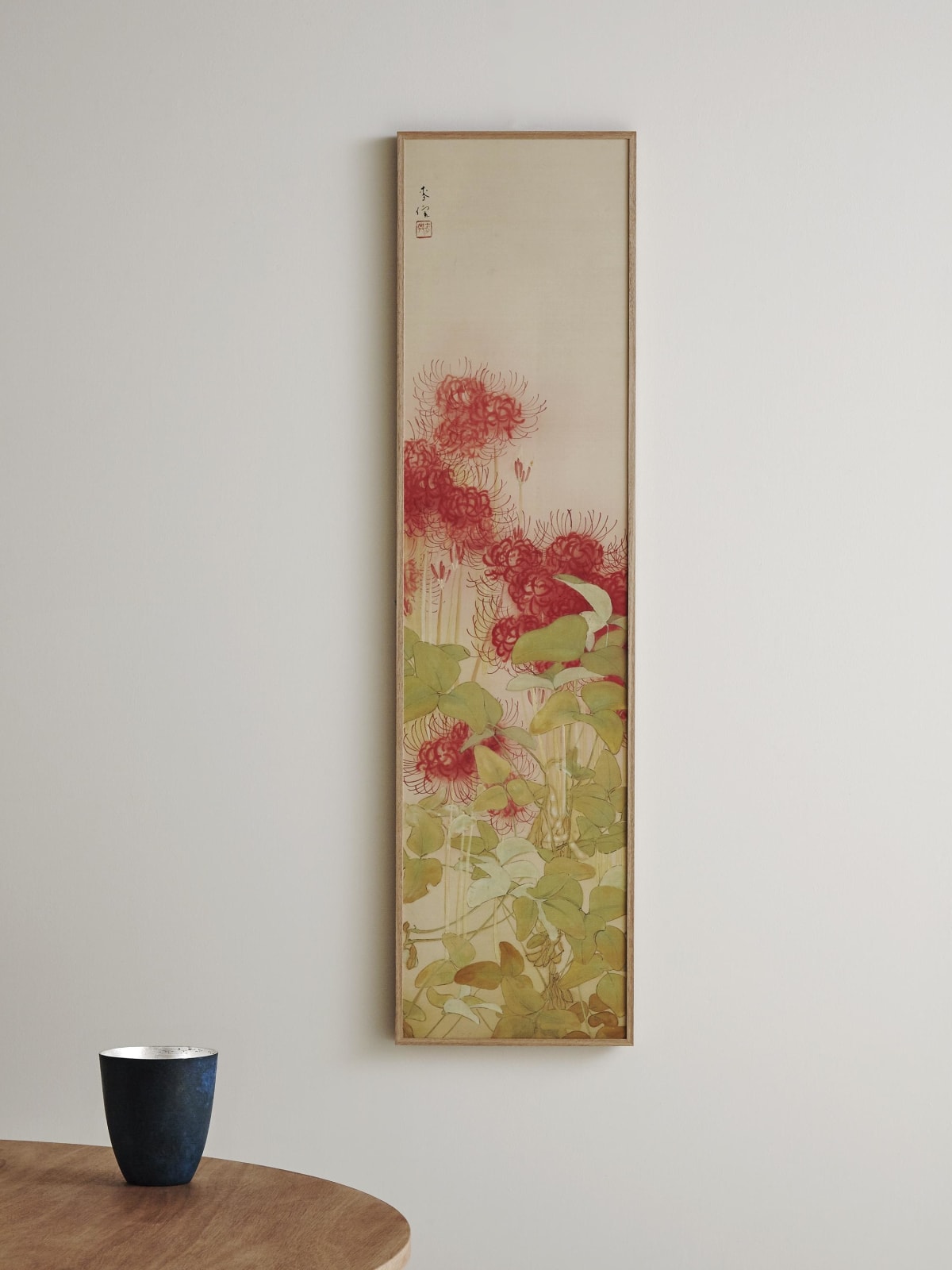Tsuchida Bakusen (1887–1936)
Beginning of Autumn
Color on silk, framed
With box authentication by Tsuchida Chiyo
Seal: Bakusen
128 x 32 cm
130 x 34 cm (overall)
With box authentication by Tsuchida Chiyo
Seal: Bakusen
128 x 32 cm
130 x 34 cm (overall)
Further images
Known by various names, Lycoris radiata, or red spider lily, is popularly called higanbana (literally, equinox flower) or manjushage in Japanese. This distinctive flower’s vivid color and appearance swaying in the wind are captivating and impart a sense of fragility. Unlike most flowers, the blossoms bloom before the leaves appear and fall as the leaves grow in, thus they cannot be seen at the same time. In this painting, however, the blossoming lilies are accompanied by twisting edamame soybeans, creating a brilliant effect of complementing colors. Nowadays, higanbana can often be seen during the autumn equinox growing in rows along footpaths between rice fields and near riverbanks, though less usual may be these flowers blossoming with green soybean plants as captured in the painting here. The air of the slight browning and changing of color on the tip of the leaves and the withering soybeans suggests the deepening of the lonely feeling of autumn.
Tsuchida Bakusen (nihonga painter; 1887–1936)
Niigata-born nihonga painter. His real name is Kinji. A student of Suzuki Shonen and Takeuchi Seiho. Graduated from the Kyoto Municiple Special School of Painting. Co-founded Kokuga Sosaku Kyokai (Association for the Creation of National Painting) with Murakami Kagaku, Ono Chikkyo, and Sakakibara Shiho in 1918. Active at Bunten (Ministry of Education Art Exhibition) after the dismember of Kokuga Sosaku Kyokai. His work attains a great balance between the Western style and traditional Japanese style, and embraces a sense of gracefulness and freshness. One of the most outstanding nihonga painter of his time. Member of Teikoku Bijutsuin (Imperial Fine Art Academy).
Tsuchida Bakusen (nihonga painter; 1887–1936)
Niigata-born nihonga painter. His real name is Kinji. A student of Suzuki Shonen and Takeuchi Seiho. Graduated from the Kyoto Municiple Special School of Painting. Co-founded Kokuga Sosaku Kyokai (Association for the Creation of National Painting) with Murakami Kagaku, Ono Chikkyo, and Sakakibara Shiho in 1918. Active at Bunten (Ministry of Education Art Exhibition) after the dismember of Kokuga Sosaku Kyokai. His work attains a great balance between the Western style and traditional Japanese style, and embraces a sense of gracefulness and freshness. One of the most outstanding nihonga painter of his time. Member of Teikoku Bijutsuin (Imperial Fine Art Academy).









